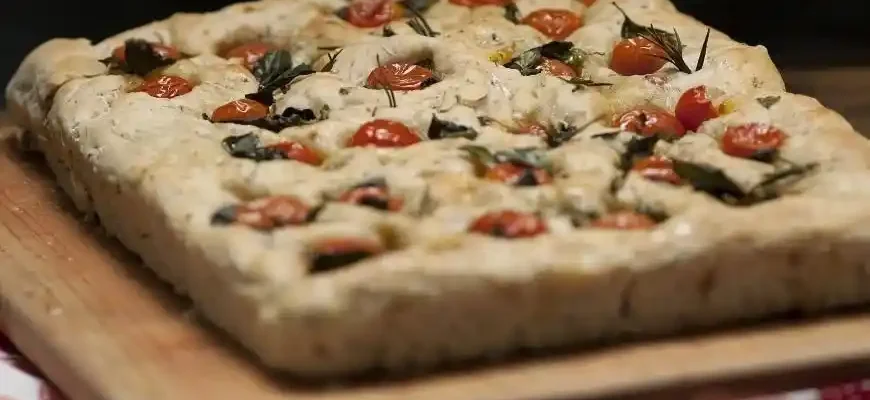Focaccia bread, a simple yet deeply satisfying Italian delight, has roots stretching back to ancient times. Whether you’re a seasoned baker or someone who’s just venturing into the world of homemade bread, making focaccia is a rewarding experience. Here, we’ll explore everything you need to know—from the ingredients and the step-by-step process to tips and tricks to make sure your focaccia turns out perfect every time.
What is Focaccia?
At its core, focaccia is a flat, oven-baked bread, often compared to pizza dough. It’s typically seasoned with olive oil, salt, and herbs, though variations are endless. Focaccia can be served as a side dish, used as a sandwich bread, or enjoyed on its own. The beauty of focaccia lies in its versatility and the fact that it’s incredibly easy to make, even for beginners.
The Basics of Focaccia Ingredients
Like all great breads, focaccia is made from just a few basic ingredients. The ratios and quality of these ingredients are key to achieving that perfect, fluffy texture with a crisp, golden crust. Here’s what you’ll need:
- Flour: For a good focaccia, all-purpose flour or bread flour is usually recommended. Bread flour gives the dough a higher protein content, which results in a slightly chewier texture.
- Water: Warm (not hot!) water helps activate the yeast. It’s best to aim for a temperature between 95°F and 105°F. Too hot, and you’ll kill the yeast; too cold, and the dough won’t rise properly.
- Yeast: Active dry yeast or instant yeast works fine. Instant yeast can be mixed directly with the dry ingredients, while active dry yeast requires proofing in water first.
- Olive Oil: This is a defining feature of focaccia. The olive oil adds flavor and moisture, helping to keep the bread tender. You’ll need some for the dough itself and extra for drizzling over the top before baking.
- Salt: Essential for flavor. Don’t skimp on this.
- Sugar: A little sugar helps to feed the yeast and encourage the rise.
- Herbs and Toppings: The classic focaccia seasoning is rosemary, but you can get creative. Other common additions include garlic, thyme, sea salt, olives, or even tomatoes.
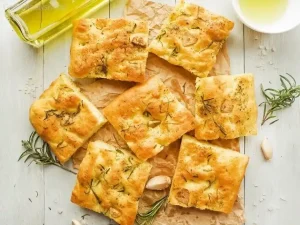
Step-by-Step Guide to Making Focaccia
Step 1: Prepare the Yeast
In a small bowl, combine 1 packet (about 2 1/4 teaspoons) of active dry yeast with 1 teaspoon of sugar. Add 1/4 cup of warm water (about 105°F) and stir gently. Let the mixture sit for about 5 minutes until it becomes frothy. If it doesn’t froth, your yeast may be dead, and you’ll need to start again with fresh yeast.
Step 2: Mix the Dough
In a large bowl, combine 3 cups of flour with 1 teaspoon of salt. Make a well in the center, and pour in the yeast mixture, along with 1/4 cup of olive oil. Slowly mix the dough together until it forms a rough, shaggy ball.
Step 3: Knead the Dough
Turn the dough out onto a floured surface and knead for about 10 minutes, or until the dough becomes smooth and elastic. You can also use a stand mixer with a dough hook for this step. Add flour a little at a time if the dough is too sticky, but try not to overdo it. The dough should be soft and slightly tacky, not dry.
Step 4: First Rise
Form the dough into a ball and place it in a lightly oiled bowl, turning it once to coat all sides. Cover with a clean towel or plastic wrap, and let it rise in a warm spot for about 1 to 1.5 hours, or until it doubles in size.
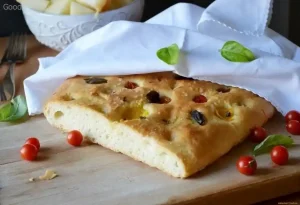
Step 5: Shape the Dough
Once the dough has risen, punch it down to release the air. Transfer the dough to a baking sheet lined with parchment paper or lightly oiled. Use your hands to gently stretch and spread the dough out into a rectangle or circle, depending on your preference.
Step 6: Second Rise
Cover the dough again and let it rise for another 20-30 minutes. During this time, you can preheat your oven to 425°F (220°C).
Step 7: Dimple the Dough
Before baking, drizzle the dough with olive oil and use your fingers to press deep dimples all over the surface of the dough. This not only helps the bread to rise more evenly but also creates those characteristic pockets that soak up the oil and seasonings.
Step 8: Bake
Place the focaccia in the oven and bake for 20-25 minutes, or until the top is golden brown and the edges are crispy. If you like, you can add a bit of sea salt, rosemary, or garlic to the top right before baking.
Step 9: Cool and Serve
Let the focaccia cool on a wire rack for a few minutes before cutting. Enjoy it warm or at room temperature.
Common Mistakes and How to Avoid Them
- Under or Overproofing the Dough: If your dough doesn’t rise well, it could be a sign of underproofing (not letting it rise long enough) or overproofing (letting it rise too long, causing it to collapse). Make sure the dough has doubled in size during both rises for the best results.
- Too Much Flour: Adding too much flour while kneading can lead to a dense, dry focaccia. Keep the dough soft and tacky for the lightest texture.
- Baking Temperature: Focaccia needs a hot oven to achieve a golden, crispy crust. Don’t be tempted to lower the temperature—425°F is ideal.
- Lack of Olive Oil: Olive oil is a key ingredient in both the dough and the topping. Don’t skimp! A good drizzle before baking helps the dough become golden and crispy.
- Not Enough Salt: Salt is crucial for flavor. Don’t be afraid to season generously, especially on top of the bread before baking.
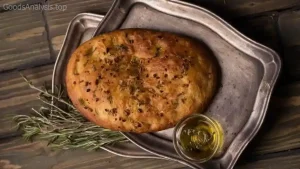
Variations and Toppings
Focaccia is one of the most versatile breads out there. You can get creative with the toppings, depending on what’s in season or your personal taste. Here are a few ideas:
- Rosemary and Sea Salt: Classic and simple.
- Caramelized Onions: Adds sweetness and depth.
- Olives: Green or black, they add a nice salty punch.
- Garlic and Herbs: You can roast the garlic first for a sweeter, milder flavor.
- Tomatoes: Quartered cherry tomatoes on top give it a fresh, juicy contrast.
- Cheese: Shredded parmesan, mozzarella, or even feta work beautifully on focaccia.
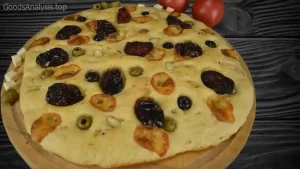
People’s Opinions on Focaccia
Emily, 31, USA
“I’ve tried making focaccia a few times, and it’s become my go-to bread! I love experimenting with toppings, like roasted garlic and thyme. It’s always a crowd-pleaser!”
Marco, 50, Italy
“For me, the perfect focaccia has a balance between soft and crunchy—definitely more oil and salt! A little secret? Let it rest overnight in the fridge for better flavor.”
Keisha, 45, South Africa
“Focaccia is a real treat in our family. It pairs well with so many meals, especially soups and stews. I prefer mine with olives and a sprinkle of sea salt on top.”
Tariq, 60, UK
“I like to make focaccia for special occasions—there’s something about the aroma of baking bread that brings everyone to the table. It’s easy, but you can’t rush it!”
Liu, 26, China
“I was surprised at how easy focaccia is to make! I added some Sichuan peppercorns and chili oil for a fun twist. My friends loved it.”
Final Thoughts
Making focaccia bread at home is a simple but satisfying experience. Whether you’re enjoying it as a side dish, using it for sandwiches, or savoring it with a nice dip, it’s a versatile bread that’s sure to impress. With the right technique and a little creativity, you can make focaccia that’s as unique as you are.
And, of course, it’s always a good idea to share your homemade bread with loved ones—because nothing says “I care” like a warm, golden loaf of focaccia fresh out of the oven.
So, roll up your sleeves, grab some flour, and start baking—you’re about to create something delicious!

